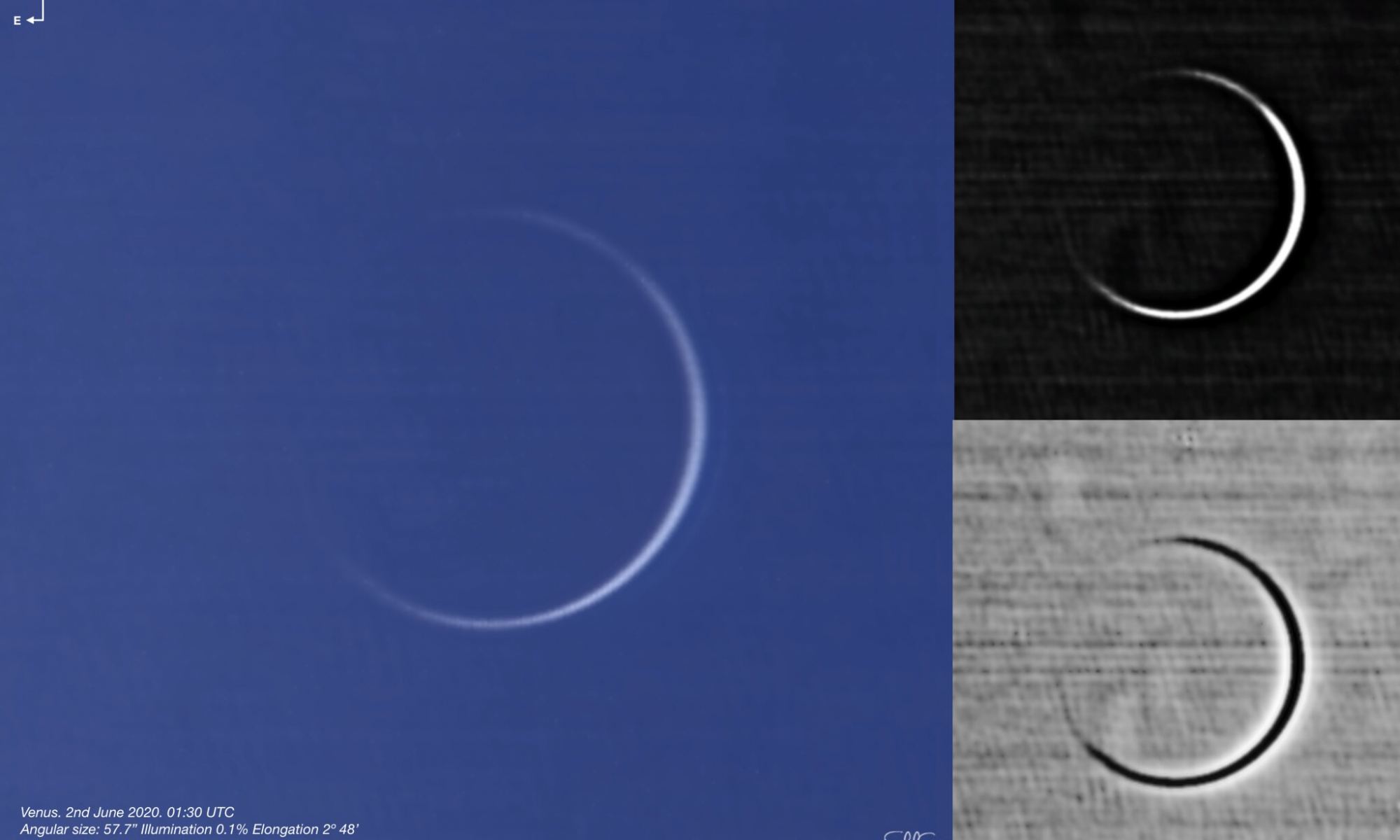Amazing things happen in the day-to-day sky that often go unnoticed during our normal routine. Just such a curious ‘non-event’ happened this week, when Venus reached inferior conjunction between the Earth and the Sun on its race from the dusk to the dawn sky. And what’s even more amazing, is the fact that some skilled observers followed this passage and caught sight of Venus as a tiny blazing ‘ring of fire’ silhouetted against the dazzling sky.
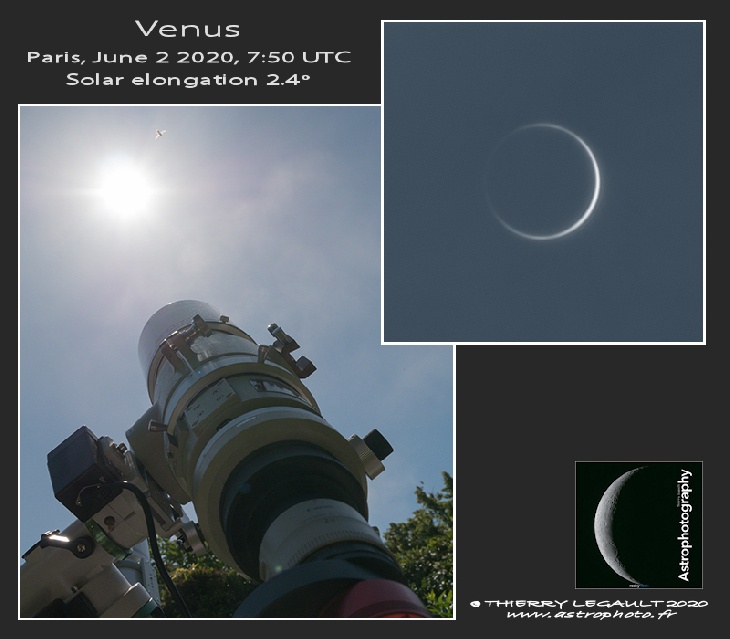
Venus juuuust missed the limb of the Sun as seen from our Earthly vantage point yesterday on Wednesday June 3rd, passing just 14’ away. Venus was shinning at magnitude -4 and was 58” across at inferior conjunction, the largest that any planet can appear from the Earth.

Still, nabbing Venus this close to the Sun presents a tough challenge. Such a passage is difficult to observe for obvious reasons: the nearby Sun can fry camera sensors, scorch optical coatings, and cause lens elements to come unglued… and of course, visual observing is dangerous and out of the question. Skilled observers who took the ‘Venus challenge’ used pinpoint tracking and took steps to hood and shield optics. No telescopes were harmed during the imaging of Venus this week. Sharin Ahmad successfully imaged Venus from his rooftop observatory in Kuala Lumpur, Malaysia and broke his previous personal record on Tuesday June 2nd, catching Venus just 2 degrees and 48’ (!) from the Sun.
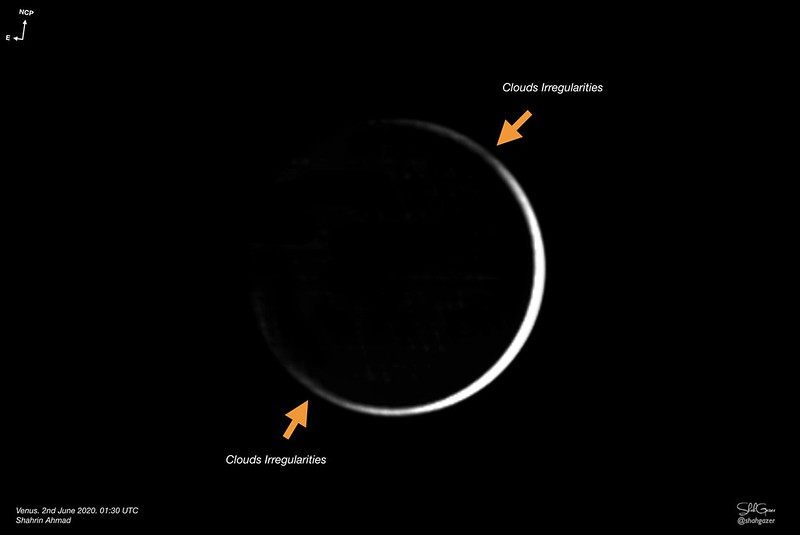
What was amazing is that several images caught a truly rare sight, with the crescent horns of Venus extending in a pearly white ring all the way around its disk. Sightings of this ‘ring of Venus’ go all the way back to December 1842, noted by a British astronomer identified in historical texts only as ‘Mr. Guthrie’. This also gave 19th century astronomers a strong suspicion that Venus does indeed have a hefty atmosphere, far denser than the Earth’s.
One account of this elusive phenomena by astronomers H.N. Russell and Z. Daniel observing from Princeton University Observatory is noted in W. Corliss’s The Moon and the Planets: A Catalog of Astronomical Anomalies and reads: “On November 29, 1906, Venus about 1 degree 49′ (!) from the Sun’s center, was observed with the 5-inch finder of the 23-inch telescope. In moments when the air was steady the complete outline of the planet was distinctly seen. When the complete circle was seen, the space within it always seemed a shade darker than without.”
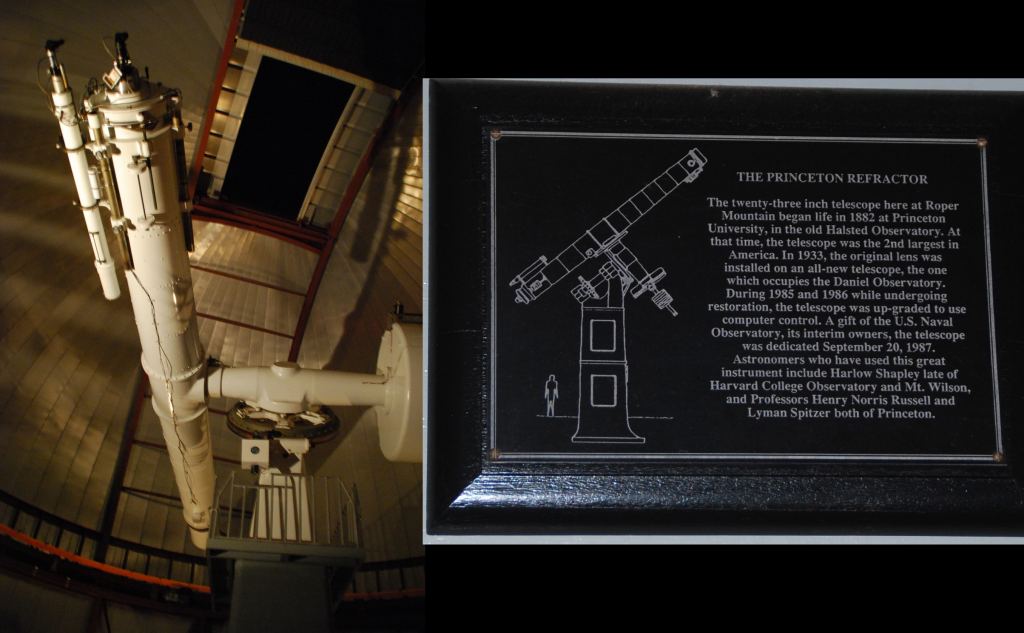
…and check out this amazing capture of Venus via a ground-based coronagraph:
Almost 8 years ago exactly, Venus passed across the face of the Sun, in what would be the last Venus transit of our lifetimes. Yesterday we had a ‘near miss’, with Venus passing less than a solar radii above the Sun’s northern edge. (Image credit, MLSO K-Cor) 1/6 pic.twitter.com/y3hftlhljy
— Ryan French (@RyanJFrench1) June 4, 2020
Following The Eight Year Cycle
You might recall that Venus didn’t miss the Sun eight years ago this month, with the final transit on Venus across the disk of the Sun for the 21st century on June 5th/6th, 2012. Apparitions of Venus very nearly repeat once every eight years, as 13 orbits of Venus equal the same span. The orbit of Venus is inclined 3.4 degrees relative to the ecliptic plane, and Venus crosses descending node along the ecliptic on Friday June 6th, though this time around, the Sun is absent.
…and conversely, Venus can appear a maximum of about five degrees from the Sun on intervening years, appearing alternately north or south of the Sun at inferior conjunction. Catching Venus with the naked eye is indeed possible pre-sunrise or post-sunset around this time, for well-placed observers. We once carried out this feat of visual athletics from North Pole, Alaska on the frigid morning of January 16th, 1998. The next shot at following Venus through inferior conjunction when it ‘goes wide’ is in 2022, passing 4.5 degrees north of the Sun on January 8th.
…and did you know that Venus actually presents the same (hidden) side towards the Earth at each inferior conjunction?
The hunt is on now to recover Venus low in the dawn sky. Venus is currently visible via SOHO’s LASCO C3 imager. Venus will dominate the dawn for the remainder of 2020.
The next inferior conjunction of Venus occurs on January 8th, 2022, and the next ‘close shave’ inferior conjunction occurs on, you guessed it… June 1st, 2028.
Finally, follow Venus into the dawn, as the thin 3.5% illuminated waning crescent Moon occults the planet for northeastern North America at dawn around 8:54 UT on June 19th.
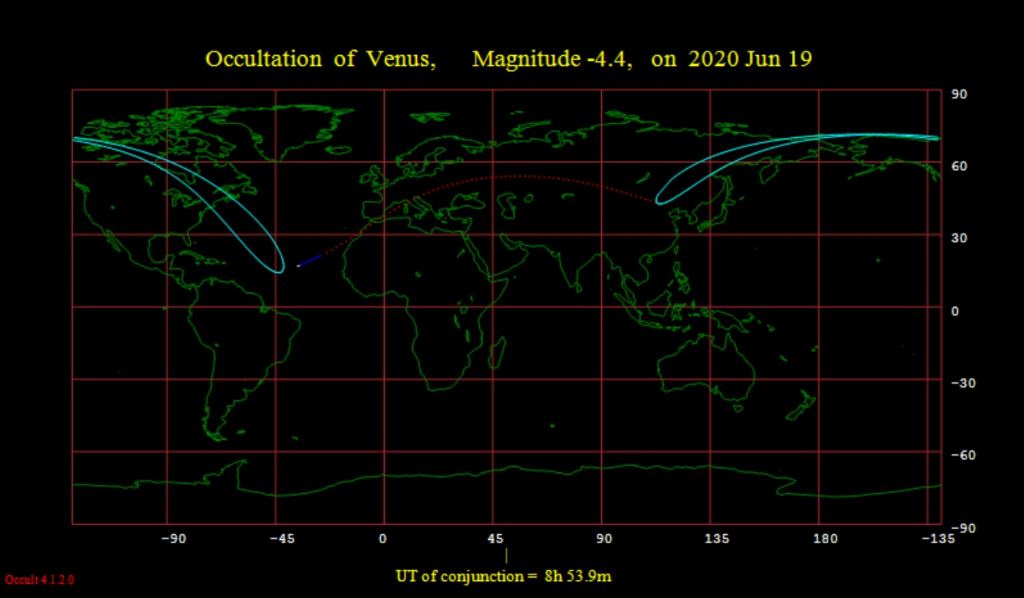
Great job to all observers worldwide, and thanks for making the celestial unseen, seen.
Lead image courtesy of Shahrin Ahmad (@shahgazer).

